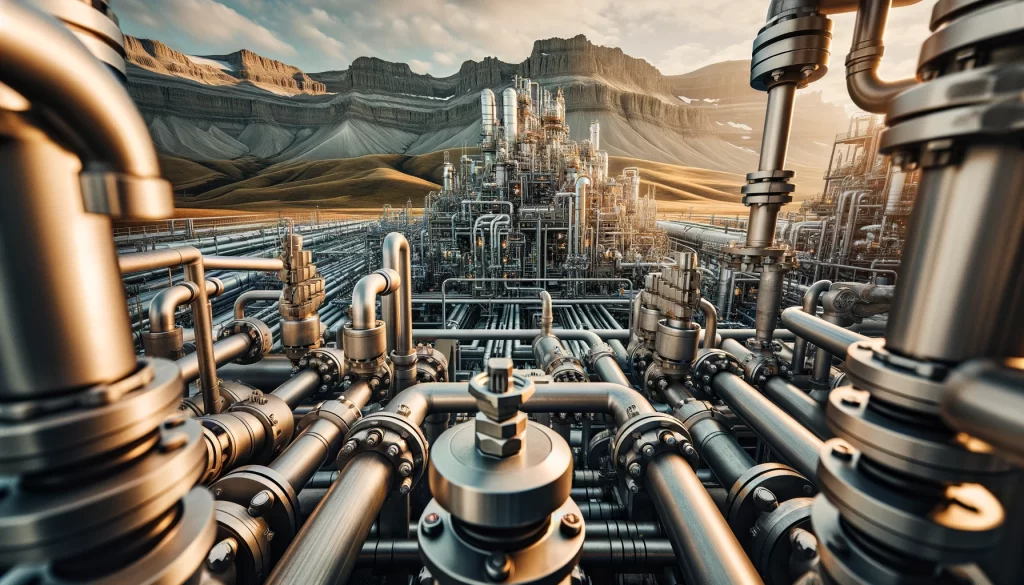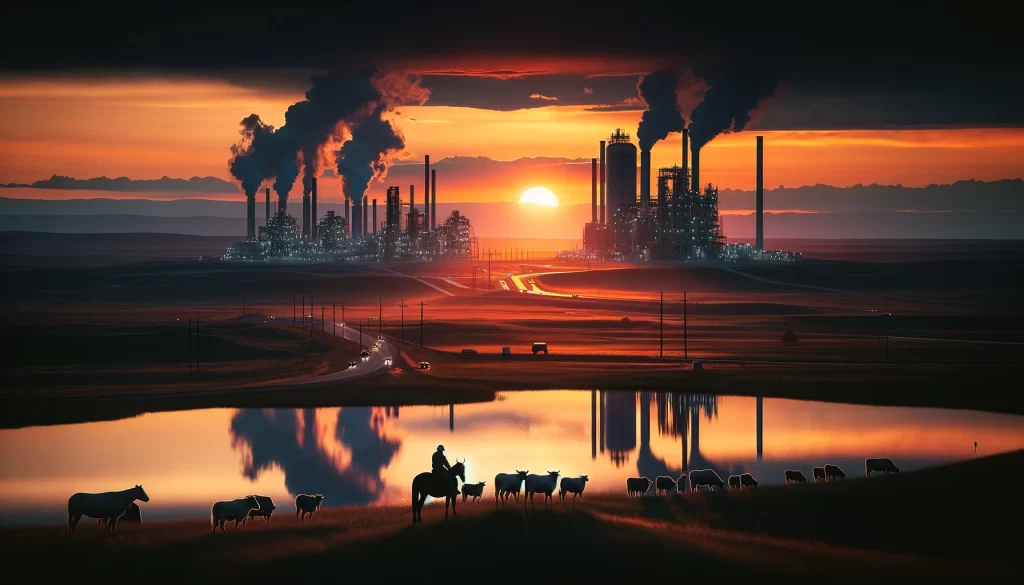In the remote, wind-swept expanse of southeastern Montana, a region that appears almost unchanged from the days of early settlers, a modern dilemma is taking root beneath the surface. This area, known for its wide-open grazing lands, is the proposed site for an ambitious environmental project aimed at combating climate change.
The project, supported by both ExxonMobil and the Biden administration, envisions transforming a 100,000-acre tract of this public land into a center for carbon capture. This technology involves taking carbon dioxide emissions from power plants and factories and storing them underground, preventing their release into the atmosphere where they would contribute to global warming.
The concept behind the project in Montana is to use the porous rock beneath the land as a storage space for these gases. The plan proposes to transport carbon dioxide from various locations across the country and inject it deep into the ground at a site called Snowy River, where it can be contained indefinitely.

Community Concerns and National Implications
The proposal has sparked significant concern among the local residents of Carter County, Montana. Many liken the idea of storing carbon beneath their land to being made a dumping ground for the nation’s pollution. Rod Tauck, the chairman of the Carter County Board of Commissioners, has voiced the community’s opposition, noting that no one in the area is in favor of this project.
This resistance is part of a broader national debate over the development of carbon capture infrastructure, which would involve extensive pipeline networks and storage sites like Snowy River. Despite its potential environmental benefits, the technology is seen by some as a way for polluting industries to continue their operations rather than transitioning to cleaner energy sources like solar and wind.
Technological and Political Challenges
The project aligns with larger climate goals set by the Biden administration and international bodies like the United Nations and the International Energy Agency. These groups have endorsed carbon capture as essential for meeting global climate targets, particularly with the projected increase in energy consumption from sectors like artificial intelligence development and manufacturing.
Despite these endorsements, the technology faces significant hurdles. Early carbon capture initiatives have struggled with community pushback, concerns over environmental impact, and questions about their technological feasibility. In Montana, for example, ExxonMobil has proposed injecting significant amounts of carbon dioxide daily, but the project is still in the planning stages, pending necessary permits and further testing.

Economic and Safety Considerations
For ExxonMobil and other legacy energy companies, carbon capture represents an opportunity to extend the life of fossil fuels while addressing climate concerns. The federal government has offered substantial tax incentives to encourage these projects, which could be highly lucrative for the companies involved.
However, the local community remains skeptical. Past incidents, such as a pipeline rupture in Carter County that created significant damage, have heightened fears about the safety and environmental risks of storing carbon dioxide underground. These concerns are exacerbated by broader issues with carbon capture projects globally, such as Chevron’s Gorgon operation in Australia, which has failed to meet its carbon trapping targets.
The Broader Impact and Future Prospects
The debate over carbon capture in Montana reflects a national conflict over how to best address climate change. While some see these projects as a necessary step towards a sustainable future, others view them as a continuation of dependence on fossil fuels under the guise of environmental progress.
The success of carbon capture technology not only hinges on overcoming technological and safety challenges but also on navigating the complex political and community landscapes. As this project continues to develop, it will likely serve as a significant reference point for similar efforts worldwide.
This article is based on the following article:
https://www.washingtonpost.com/business/2024/05/11/carbon-capture-climate-change-exxonmobil-montana

Background Information
By understanding these concepts, readers will have a better foundation to appreciate the complexities and significance of the carbon capture project in Montana and its role in broader efforts to combat climate change.
1. Climate Change and Greenhouse Gases
Climate change refers to significant changes in global temperatures and weather patterns over time. While climate change occurs naturally, human activities have accelerated the process primarily through the burning of fossil fuels like coal, oil, and natural gas. These activities increase the concentration of greenhouse gases in the atmosphere, particularly carbon dioxide (CO2), methane (CH4), and nitrous oxide (N2O). Greenhouse gases trap heat from the sun and warm the planet’s surface, which is necessary for life but can lead to harmful effects when concentrations become too high.
2. Carbon Capture and Storage (CCS)
Carbon capture and storage (CCS) is a technology aimed at reducing the amount of CO2 released into the atmosphere from sources like power plants and industrial processes. The process involves three main steps:
- Capture: CO2 is captured at the emission source before it can enter the atmosphere. This can be done using various methods, including chemical solvents or physical adsorption.
- Transport: After capture, the CO2 is compressed and transported via pipelines or tankers to a storage location.
- Storage: The CO2 is then injected into underground geological formations, such as depleted oil and gas fields or deep saline aquifers, where it is stored permanently.
3. Public Lands and Environmental Projects
In the United States, public lands are areas owned by the federal government. They are managed by agencies like the Bureau of Land Management (BLM) for multiple uses, including recreation, resource extraction, and conservation. Public lands often become focal points for environmental projects because of their size and the government’s ability to manage and regulate activities on these lands.
4. Federal Incentives for Environmental Initiatives
Federal incentives, including tax subsidies and grants, are tools used by the government to encourage companies and organizations to invest in technologies and projects that benefit the environment. These incentives make it financially more attractive for businesses to engage in activities that might otherwise be too costly, such as developing new technologies or building infrastructure for carbon capture and storage.
5. Energy Demand and Fossil Fuel Use
Understanding the global energy landscape is also crucial. Despite the growth of renewable energy sources like wind and solar, fossil fuels continue to be a major energy source worldwide due to their availability and the existing infrastructure built around them. The transition to cleaner energy sources is ongoing but faces challenges including economic factors, energy security concerns, and technological limitations.

Debate/Essay Questions
- Is carbon capture and storage (CCS) a viable long-term solution to climate change, or does it simply enable continued reliance on fossil fuels?
- Should local communities have the right to veto environmental projects like carbon capture that have national or global benefits?
- How should the safety concerns of carbon capture technologies be addressed to gain public trust and support?
- Can carbon capture technology be considered a genuine step towards environmental sustainability, or is it a temporary fix?
Please subscribe to Insight Fortnight, our biweekly newsletter!
